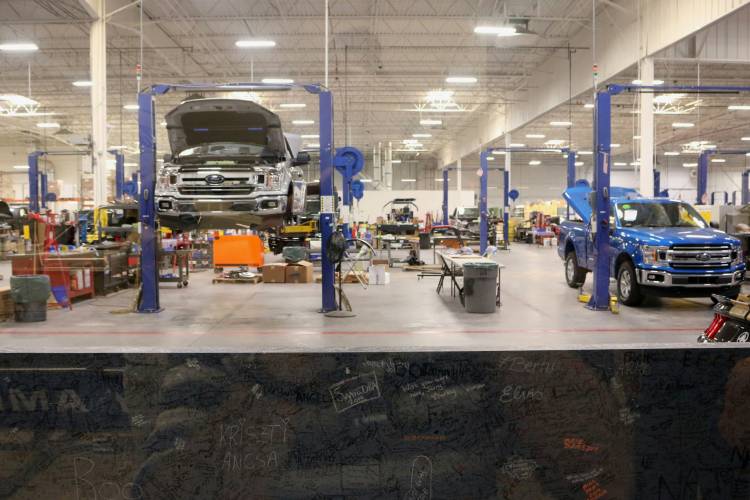
A decline in passenger vehicle sales leading to a build-up of inventory at dealerships has compounded the problems of auto manufacturers. After enjoying a three-year run of high sales, a slump has now arrived. Top car makers, including Maruti Suzuki India, Tata Motors, Hyundai Motor India, Mahindra & Mahindra, and Toyota Kirloskar Motor, reported a fall in domestic passenger vehicle sales by 1.6% year-on-year to 304,381 units in July. This was amid rationalisation of dispatches due to high dealer inventories.
The Indian automobile industry is now facing an inventory pile-up crisis, which is also affecting dealer margins. In July, rating agency ICRA reported that inventory holding at PV dealerships increased to 62–67 days, significantly higher than the average of 30–35 days as of June 2024. Dealerships are grappling with excessive inventory as car manufacturers continue to produce at a steady pace while retail sales have slowed down due to factors such as extreme heat and the impact of the Lok Sabha elections.
READ | RBI wages losing battle to stem rupee slide against dollar
Maruti Suzuki (MSIL), Tata Motors, and Hyundai (HMIL) experienced sales declines of 9.6%, 6%, and 3.3% respectively.
As India’s largest passenger vehicle manufacturer, Maruti Suzuki witnessed a 9.67% drop in wholesales to 137,463 units. While its mini car segment (Alto and S-Presso) remained steady, the utility vehicle segment saw a decline from 62,049 to 56,302 units. The mid-sized sedan, Ciaz, faced a sharp fall from 1,348 to 603 units. Sales in the compact car segment (Baleno, Celerio, Dzire, Ignis, Swift, and WagonR) also dropped by 12.5%.
Tata Motors has reported a slowdown in both its internal combustion engine and electric vehicle (EV) segments. The discontinuation of the FAME scheme has particularly impacted demand for fleet cars, resulting in lower sales for the company. The automotive industry as a whole is struggling with elevated inventory levels at dealerships, leading to increased discounts on various car models. Initially, discounts were primarily offered on slow-moving vehicles, but now they are being extended to popular models as well to maintain sales momentum.
India: Sales of passenger vehicles

According to ICRA, the inventory buildup is expected to persist, putting pressure on dealership profitability. Other contributing factors include liquidity issues, a lack of new model launches, intense competition, and poor marketing efforts by Original Equipment Manufacturers (OEMs). While heatwaves have distressed several sectors such as the automobile, fast-moving consumer goods, and retail, a growth in rural demand was anticipated with a good monsoon and improved finance availability.
In contrast, the two-wheeler sector is thriving, with major players reporting substantial sales growth. Honda Motorcycle & Scooter India leads the pack with a remarkable 41% year-on-year increase, driven by an expanded network and strong performance in South India. Bajaj Auto followed closely with a 19% sales surge, and TVS Motor Company has also witnessed positive growth, with sales increasing by 8%. This overall resurgence in the two-wheeler market is attributed to improved rural sentiment due to favourable monsoon conditions.
Challenges facing automobile industry
According to a statement by the Federation of Automobile Dealers Associations, while discount schemes and good product availability are in place, low customer inquiries and postponements due to seasonal factors remain concerns. As pressure continues to build up in the retail channels amid slowing sales, passenger vehicle makers have approached auto financiers, requesting them to extend the credit cycle for dealers to 90 days from the current 60. This trend was last seen in FY19.
While automakers were expected to induce planned shutdowns to help moderate production volume and manage inventory, this did not materialise as hopes were high that car sales would pick up once a new government was elected. The sector was also pinning hopes on forecasts of a good monsoon, cooling inflation, and moderation in interest rates. Now, carmakers await the festive season, which generally witnesses a bump in demand. The festive season, which kicks off in October, may finally trigger demand.
Addressing the crisis
Automakers can address the inventory buildup by adjusting production to match demand. Traditionally, car makers have followed a “Build-to-stock” (BTS) model, similar to practices in the Americas and China. While this approach offers efficiency and predictability when production is streamlined, in a world of rapidly evolving consumer preferences, BTS creates a vulnerability of unsold inventory. Excess stock forces dealerships to slash prices, hurting both brand value and their bottom line.
To counter this, another alternative has emerged. Build-to-order (BTO) is a model gaining traction in the automotive industry, allowing customers to customise their vehicles with specific features and accessories. This approach, prevalent among luxury brands like Porsche, Ferrari, and Mercedes Benz, minimises inventory costs and waste by producing cars only when ordered. While it offers environmental benefits and reduces holding costs, customers may face longer wait times. BTO is expanding beyond luxury cars and is being adopted by newer and direct-to-consumer brands, even in the mass-market segment.
For the time being, dealers must be supported with extended credit and financial aid. The industry must also invest in refining demand forecasting models, diversifying product offerings, and optimising their sales network for efficient inventory management. While industry watchers suggest offering enticing incentives and discounts, many are hesitant to offer discounts, claiming that they are already competitively priced.
